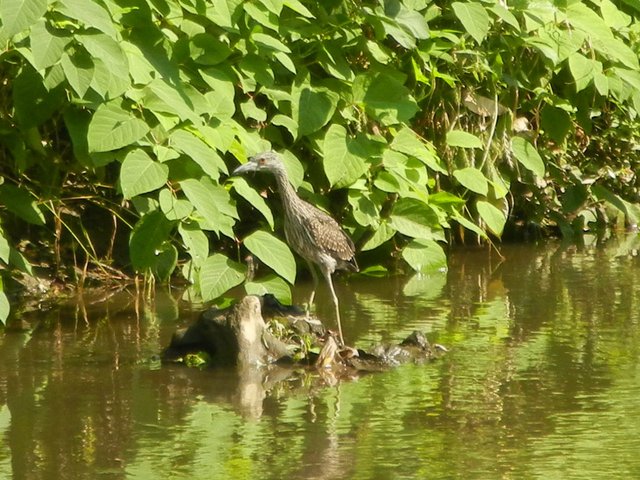Juvenile Yellow-crowned Night-Heron in album nature
In Albums: nature birds Philadelphia

Jun 29th, 2012, by Alex Zorach
This photo shows a juvenile yellow-crowned night-heron (see Wikipedia or Cornell Lab of Ornithology for more about this species).
This bird was spotted on July 29th, 2012, in Cobbs Creek Park, Philadelphia. This photo was taken from the bridge across the creek, near the Environmental Education Center at the end of Catharine street. This is the most unusual bird I've seen this year, since the end of fall migration. This bird is probably a year-round resident in Philadelphia county, but is infrequently reported, probably owing to its usually nocturnal habits. eBird had no records in June, and no records at this site or nearby.
I quickly identified this bird as a juvenile night heron by its heavily streaked, camoflaged plumage and large, red eye. I first thought that it would be a black-crowned night heron, because the black-crowned species is more likely to be active during the day, and is more common in this area. But upon actually examining the bird it is clear that it is a yellow-crowned night-heron, not black-crowned. Some of the distinguishing characteristics:
- Shape - In my opinion, shape more easily distinguishes the two night-herons than any other characteristics. This bird shows long legs and a long neck. It has a slender overall appearance, in contrast to the stockier build of the black-crowned night heron.
- Dark, heavy bill - The bill of this bird is all dark; juvenile black-crowned night herons usually show extensive yellow on the bill. The yellow-crowned night heron also has a bill that looks very bulky at the base.
- Pattern of spotting on wings - Although I find this field mark was little trickier to learn, it is clearly evident on this bird. Both night-herons have brown wings with white spots. The juvenile yellow-crowned night-heron has smaller white spots, and distinctive thin white edges on the feathers. The black-crowned has larger spots and an absence of white edges. Although I find the spot size alone hard to use as a field mark, this bird clearly shows the white edges.